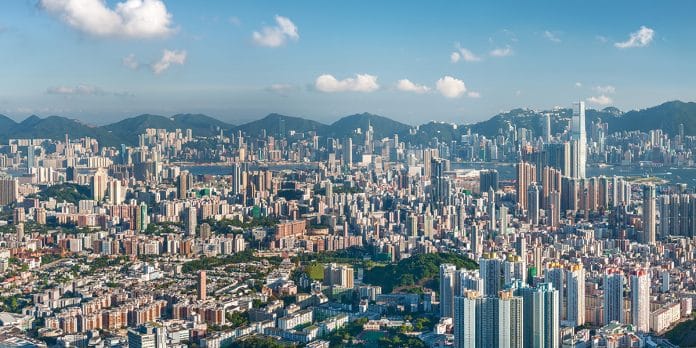By Daryl Ng
The Regional Comprehensive Economic Partnership (RCEP), which entered into force on January 1, 2022, encompasses all 10 Asean member states plus China, Japan, South Korea, Australia and New Zealand. It represents 30 per cent of the world’s population and 30 per cent of global gross domestic product, and epitomises the virtues of open and dynamic trade relations, the very foundation on which Hong Kong was built into a global logistics, trading and financial hub.
Hong Kong filed an application to join the RCEP in January 2022, and the city is expected to come on board as a member of the world’s largest free trade pact this year. A good number of RCEP members have expressed support for Hong Kong’s application.
Indeed, all RCEP members, including the economies of the Association of Southeast Asian Nations, are already important trading partners of Hong Kong’s. The city has signed free trade agreements with 13 of the 15 RCEP members. RCEP members accounted for 71 per cent of the city’s total merchandise trade in 2022 and 46 per cent of its total trade in services in 2021.
Hong Kong will benefit significantly from RCEP membership with boosted trade among member economies. In the meantime, Hong Kong can contribute to both the RCEP and the region by providing top-notch professional services, infrastructure and connectivity, given the city’s geographical proximity to and people-to-people ties with markets in the region, in particular the Greater Bay Area and the rest of China. This will help RCEP members receive the services and technical support they need.
Hong Kong is an “important trade and investment partner” to RCEP members, as Premier Li Qiang said in a speech last year seeking greater regional economic synergy.
At the Hong Kong-Asean Summit last year, Chief Executive John Lee Ka-chiu pledged that the city would be a “value-adding gateway” connecting China to the rest of the world while leveraging Hong Kong’s well-established systems, outstanding connectivity, business-friendly environment, simple and low tax system, superb efficiency and know-how accumulated over a century.
Firstly, trade harmonisation can go a long way towards bolstering market access, stimulating export growth and supporting nascent industries across emerging economies.
While Hong Kong has yet to sign free trade agreements with Japan or South Korea, it is already one of the largest overseas markets for Japanese agricultural produce and products. In 2023, South Korea was Hong Kong’s sixth largest trading partner, with trade between them having grown annually by 1.8 per cent from 2019.
By further lowering tariffs, aligning trade regulations and compliance requirements with the bloc, and streamlining documentation and vetting processes, Hong Kong’s membership of the RCEP would facilitate more seamless trade creation and diversification among all the members.
Secondly, Hong Kong could draw upon its strength in financial services and the full range of professional services to complement existing developmental initiatives and meet the financing needs of new ones. Our city has long served as a critical conduit for foreign direct investment from mainland China into Southeast Asia.
Hong Kong is also considered by many Greater Bay Area companies as the first stop outside the mainland, thanks to the city’s strengths in financial, legal, accounting and other professional services.
Hong Kong’s market policies and practices are already largely in sync with the stipulated obligations of the RCEP. From monitoring cargo flows to facilitating high-quality microloans, from smart contracts to digital currencies, Hong Kong would serve as a constructive repository of knowledge about multidimensional integration across RCEP members.
Thirdly, enterprises and investors alike would also welcome the improved market access and reduced costs of capital flows, which are conducive to a vibrant region. In 2022, Hong Kong was the fifth largest source of foreign direct investment for Asean, with a staggering leap of 40.4 per cent year on year.
When Hong Kong joins the RCEP, intra-bloc capital flows and investments can be expected to soar. Hong Kong’s burgeoning ties with the Gulf states and long-standing connections with the Europe Union, United Kingdom and United States enable it to serve as a springboard for growth-seeking capital into East Asia and the Oceania.
Hong Kong can also foster connections and partnerships, helping Asean and other RCEP members secure the technical support and knowledge they need to enter the Greater Bay Area and the broader mainland market with confidence, under the auspices of “one country, two systems”.
Hong Kong has long been considered as the gateway where East meets West. With RCEP membership, we can further reinforce our position as the “superconnector” between countries to facilitate mutual investments and to reach out for opportunities. In creating connections and adding value to the RCEP, Hong Kong would be creating new opportunities for itself. As Asia’s world city, it is high time for us to unleash our real potential for a better shared future.
The author is chairman of the Hong Kong-Asean Foundation, a not-for-profit organisation seeking to promote and deepen ties between Hong Kong and the Association of Southeast Asian Nations









